The Strand Theatre opened on September 2, 1915 with “The Island of Regeneration”. The theater had seating for more than 1200 patrons. It was demolished in 1990.
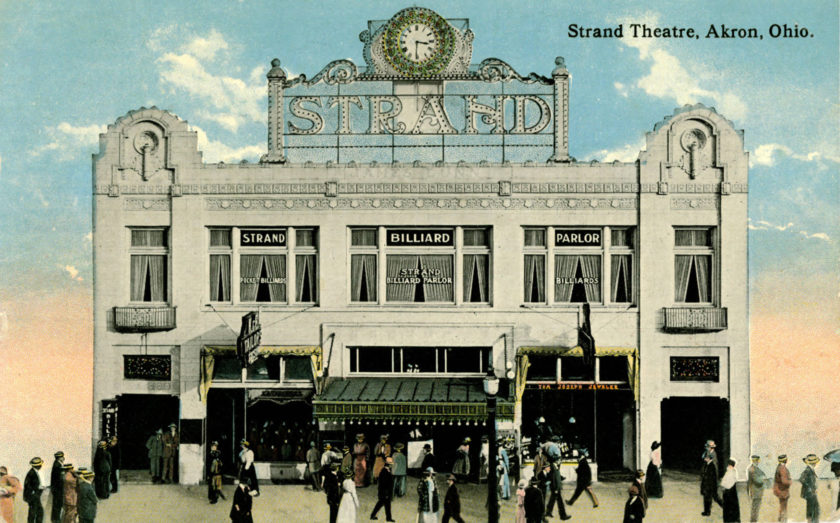

The Strand Theatre opened on September 2, 1915 with “The Island of Regeneration”. The theater had seating for more than 1200 patrons. It was demolished in 1990.
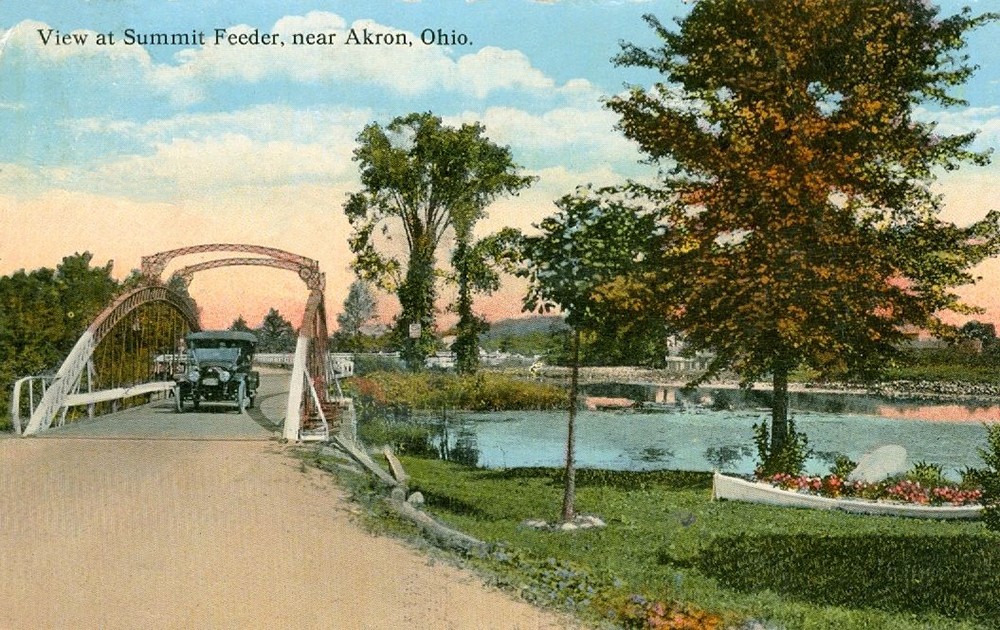
For much of the early 1900’s, the Summit lake area of Akron was among the most picturesque in the city.
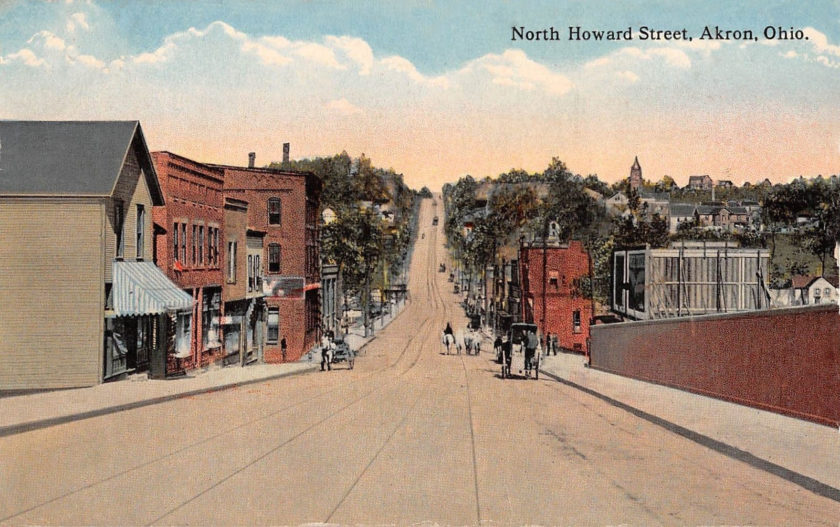
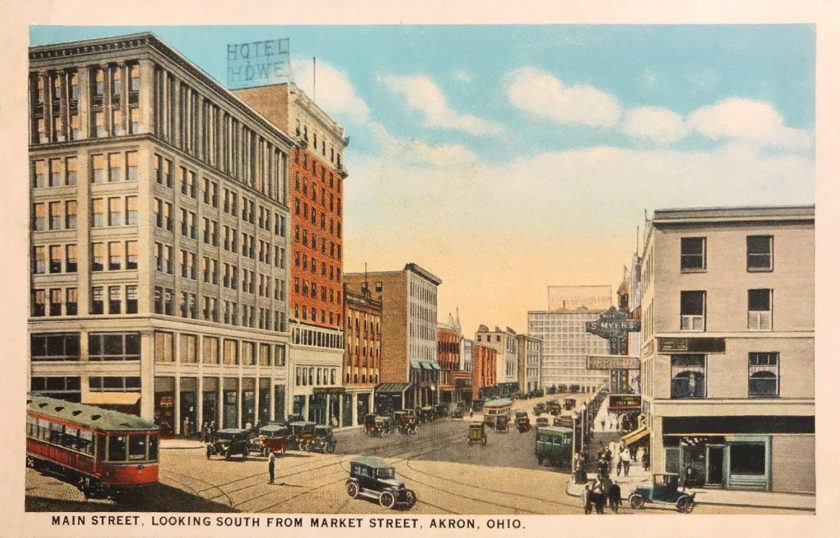
Postcard view of Akron’s Main Street from Market Street looking south. Founded along the Little Cuyahoga River in 1825 by Simon Perkins and Paul Williams, the location of Akron carefully and strategically planned at the summit of the developing Ohio and Erie Canal.

Grace Park wasn’t always a “shady” place. Back in the day, the park was one of Akron’s most popular retreats.It played host to picnics, leisurely strolls, community gatherings and fiery political speeches. Famous names like Hayes, McKinley, and Rosevelt stood in Grace Park to deliver their words to the people of Akron.
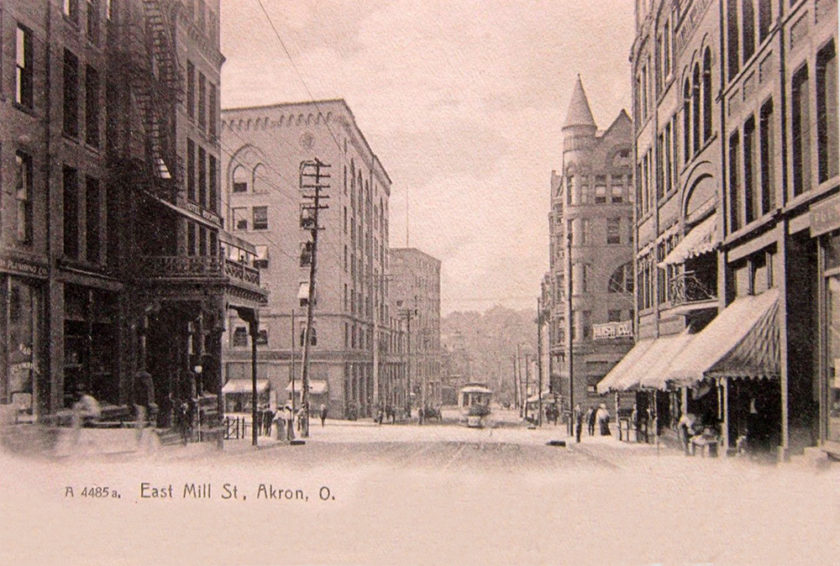
Akron’s boom came from the rubber industry, but before that, it was an important canal town, a regional center for milling and a notable mass-producer of clay products.
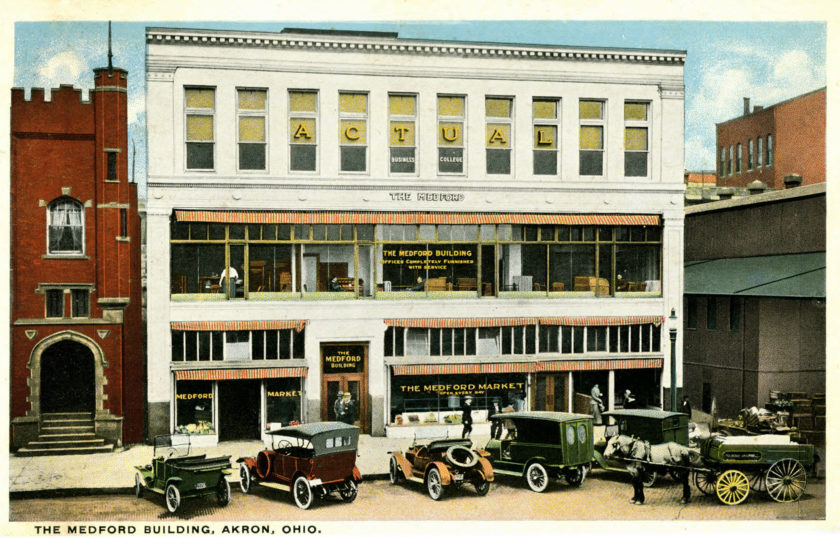

In this postcard view of old Akron, children of all ages can be seen playing together on teeter-totters (seesaws) at the Perkins Square play ground.
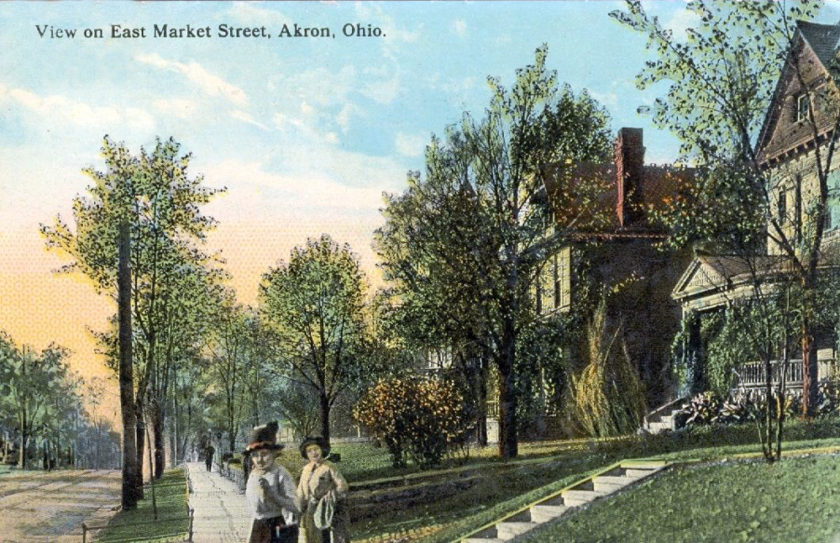
East Market Street featured the homes of F.A. Seiberling (Goodyear), Ferdinand Schumacher (Quaker Oats) and O.C. Barber (Diamond Match).
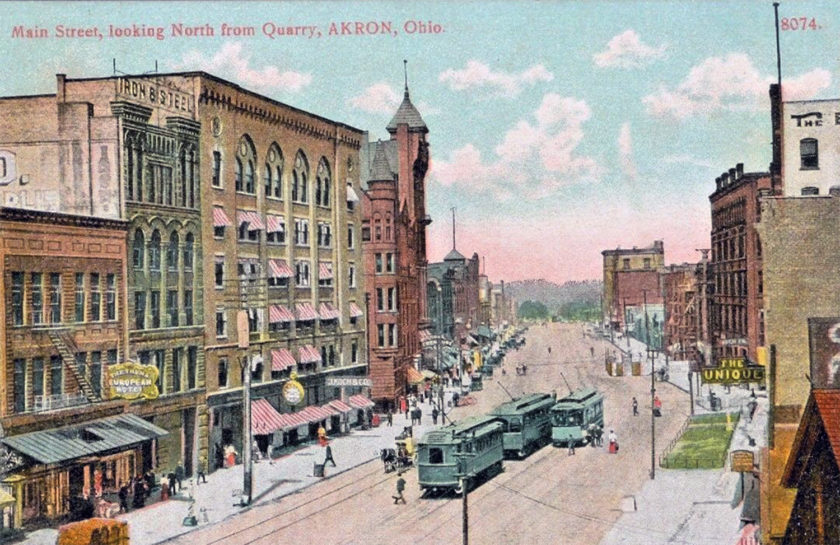
The Unique theater on Main Street was one of Akron’s famous vaudeville theaters. Around 1905, The Unique would be converted into Akron’s first motion picture theater.

The Empire House opened on November 20, 1847. The hotel served Akron visitors until it was torn down in 1912 to make way for the Portage Hotel.
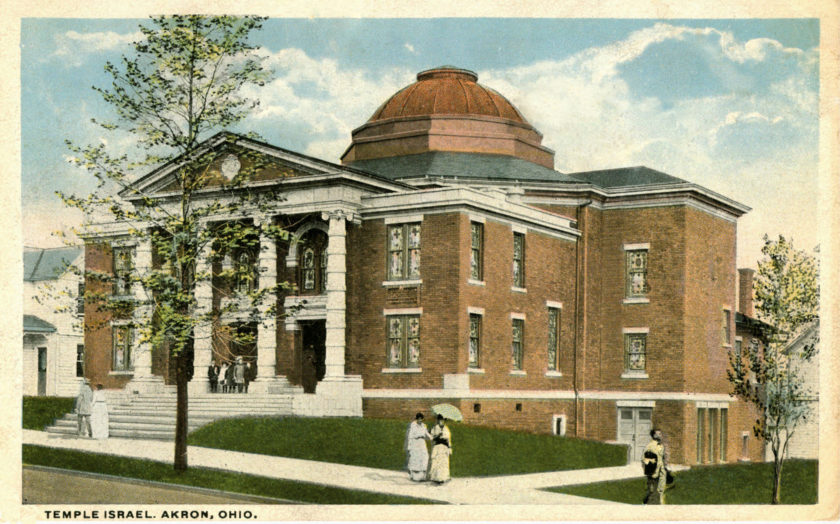
Built in 1911, the synagogue on Merriman Road replaced temporary space at St. Paul’s Episcopal Church on High Street. The facility underwent renovations and expansions in 1952 and 1987. It was replaced by a new synagogue in 2014 which is located at 91 Springside Drive, in Bath Township.
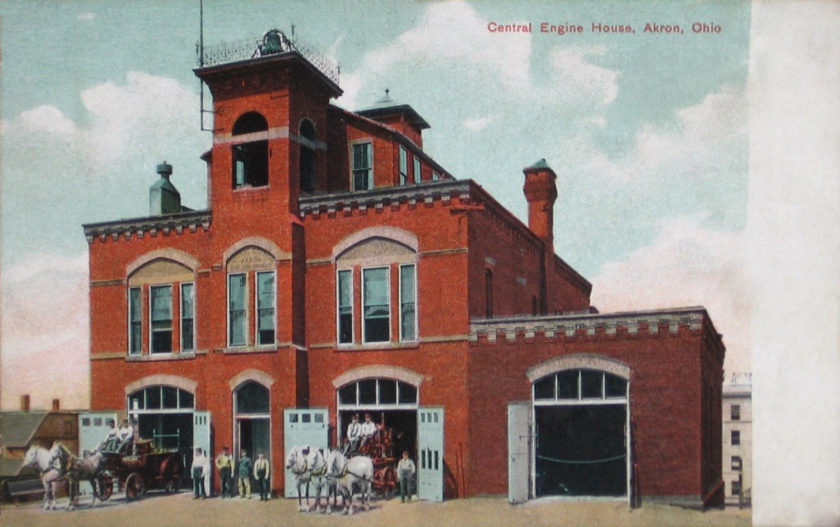
Akron Fire Department has a long and proud history dating all the way back to 1839 when the North Akron Fire Company was formed. Akron’s volunteer fire-fighting forces were consolidated to form the “Akron Fire Department” in 1866. The members of the department were placed on a full pay basis in 1903. The department was…
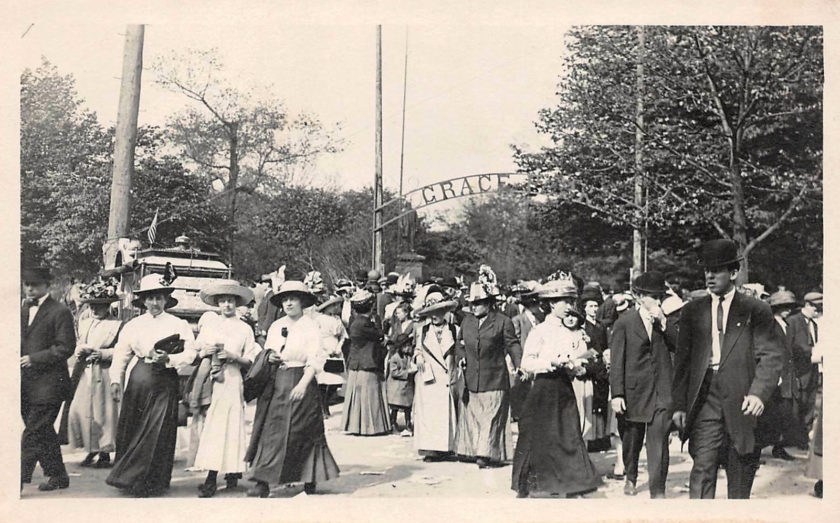
Before the mass exodus of manufacturing destroyed Akron’s reputation as a city of opportunity, places like Grace Park were often full of residents listening to speeches, celebrating victories and relaxing on a day off.

Although grand in appearance, Akron’s Union Station was not a centerpiece of pride for Akronites. Many visitors complained that the railroad station was too cold in the winter, too hot in the summer, dirty, and small. Despite the complaints, the station lasted nearly 60 years before being replaced by the more modern Union Depot.

A view of a busy Main Street looking North with Mill Street as the first intersection. Akron was central to the street car and interurban rail traffic of the day.
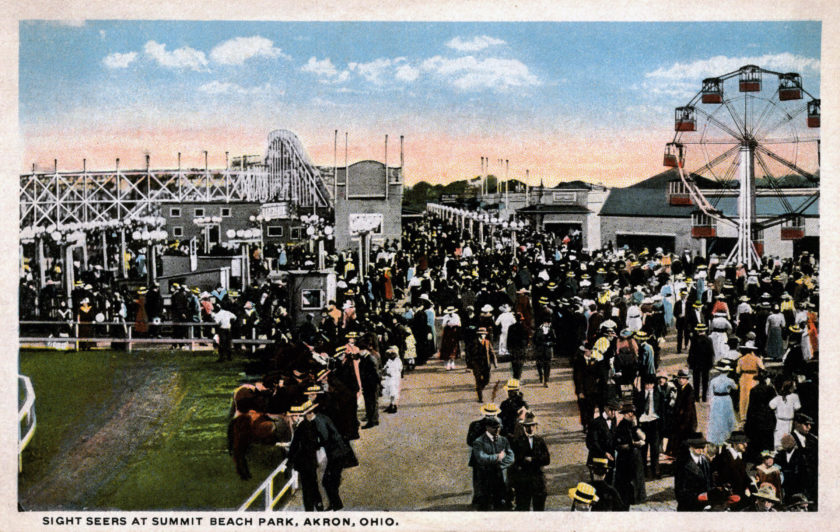
A crowded day of fun at Akron’s Summit Beach Park on the shores of Summit Lake. The park provided Akronites with 40 years of summer fun before closing the gates for good in 1958.

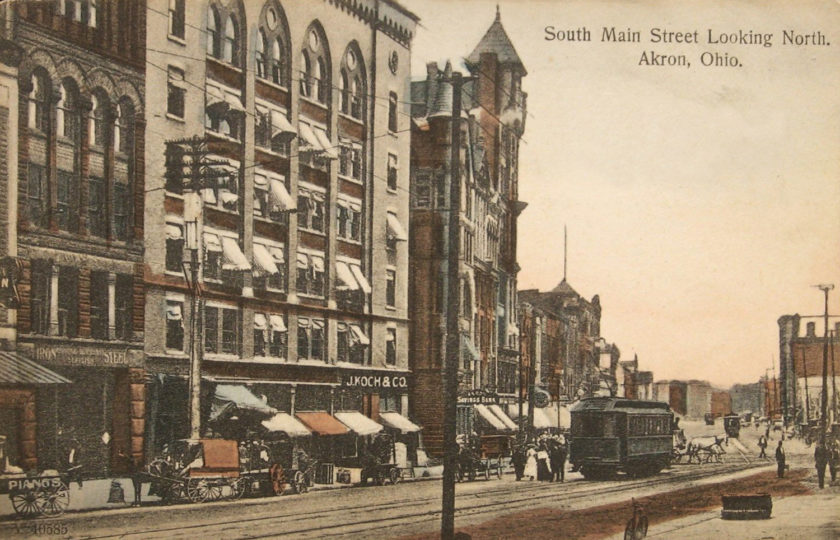
At a time before automobiles ruled the streets, most of Akron’s leading stores, theaters, and hotels were located along South Main Street. Trolley’s and horse carts added to the bustle of downtown.
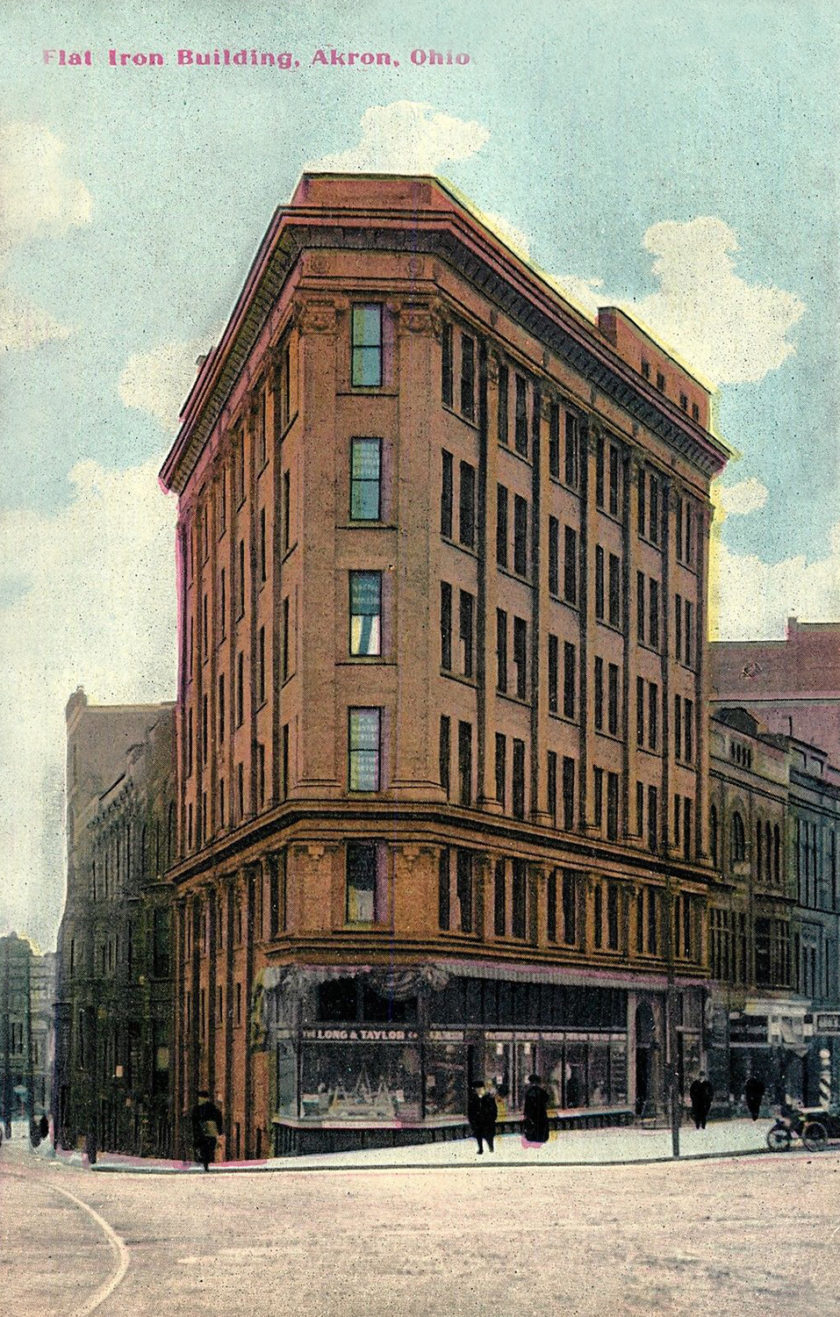
Akron’s Flatiron Building was located at Howard and Main Streets in downtown Akron. It was built in 1907 and demolished in 1967.

Silver Lake Park had several log cabins, like the one shown here, as well as Swiss-style cottages. The park began in 1876 when Ralph H. Lodge built a small bathhouse and pavilion and provided boats for rental to fishermen. Soon the railroad was bringing excursions from places as far away as Columbus and Pittsburgh. At…
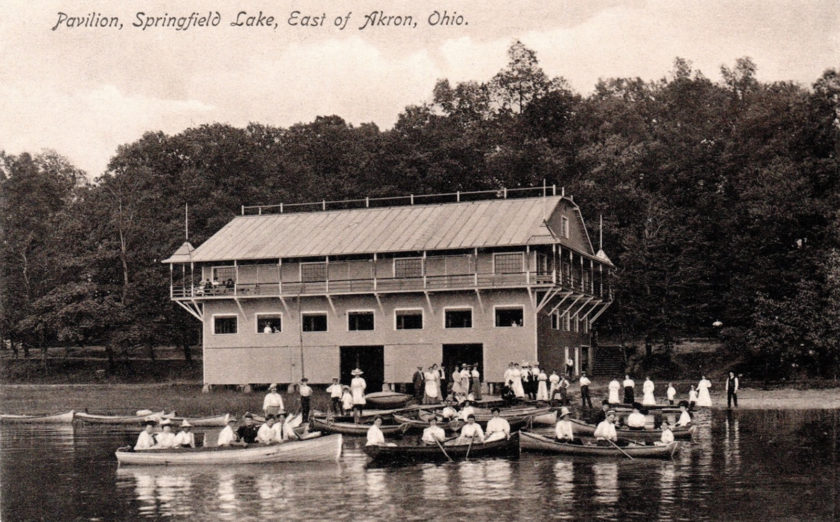
The Springfield Lake Pavilion was used for many social functions, including dancing on Saturday nights and Sunday afternoons. Patrons danced to the music of big name bands such as Guy Lombardo and Vaughn Monroe.
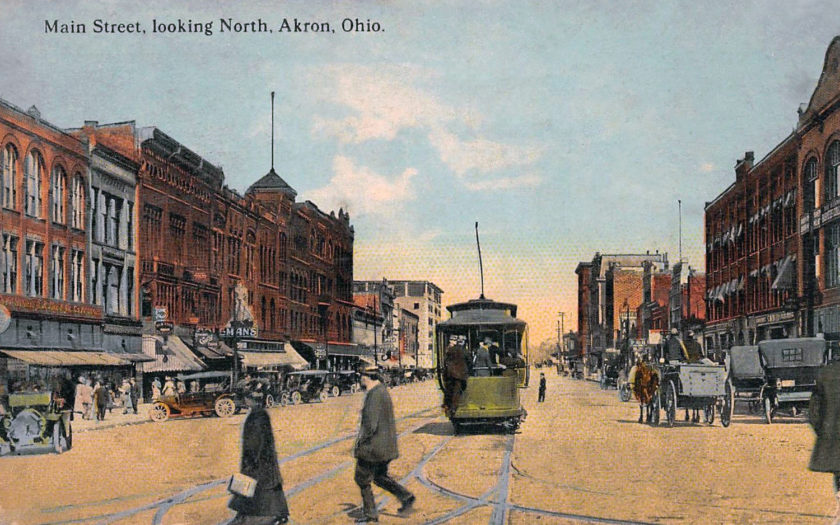
An early view of Akron’s Main Street complete with streetcar, horse cart and vintage automobiles.
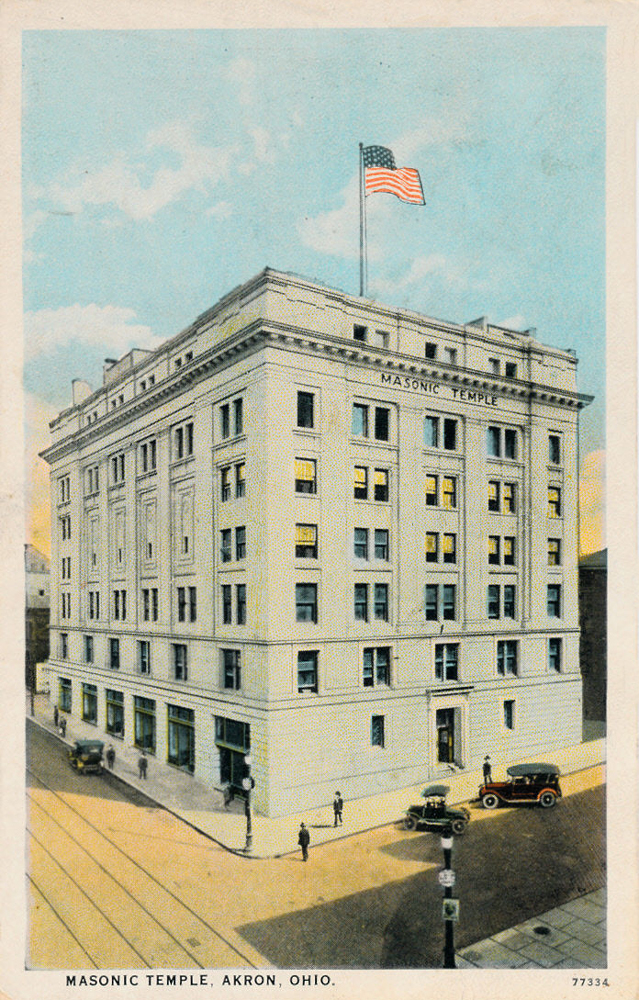
Built by the Freemasons in 1917 for their business and social gatherings. Following a sale in 1999, the building went through a two million dollar restoration project. Today the structure is used as a special events center.

Patriotism is on display as Akronites turn out for a celebration on South Main Street.